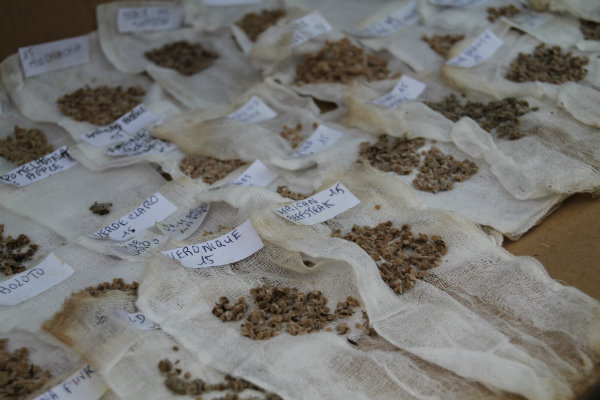Meet the Man Who Wants to Save the World with Tomatoes
Photos by Emily Monaco
You won’t frequently find Michel Danneau sitting down, but that’s what he’s doing the first time I see him. As I walk towards him, I take in the expanse of his verdant Garden of Eden behind him, marveling at the cornucopia of strange, heirloom vegetables — bulbous tomatoes, spiny-looking squash, eggplant whiter than the moon.
When I approach, Danneau is sitting at a card table in the shade, sorting small brown seeds onto pieces of cotton.
Within the first few moments of meeting Michel, however, it’s as though I’ve known him for years. He’s an open book, often speaking in aphorisms of his own invention.
“I want to die young, but as late as possible,” the man who claims he has been 39 for “a while” says with a grin, and it seems that he’s going to achieve this goal.
Michel lives in the small town of Coullons, in the Center region of France, not far from the chateaux of the Loire Valley. When he finally bought this house at the age of 50, after years of working in the pharmaceutical industry, he decided he was going to make it into a place that encouraged life… and he was going to attempt a feat he knew possible: change the world by growing 1,008 varieties of tomatoes.
Michel spends most of his time in his own little piece of paradise, tending his tomatoes and other vegetables, and doing things his own way. Growing 1,008 varieties of tomatoes wasn’t as intimidating to him as it sounds, because he always did things a little differently. “I never do anything like other people,” he says. He offers many examples of this — leaving school at 14, backpacking around the world far before it was “cool” — but the biggest highlight of his independent worldview is his interest in biodiversity, a passion that drives his tomato-growing project.

His garden bears witness to this obsession, a place of his own invention dedicated to life — which is “bio” in Greek, he points out. And bio is the word that has been used to represent organic agriculture in France since the 1920s.
“The idea was to create a space where life thrives,” he says. “I have peacocks, I have donkeys, I have tortoises down there. I mean, there’s a place for everything. That’s why I don’t have a dog. If I had a dog, I wouldn’t have anything.”
The garden itself is planted in the form of a daisy. “It’s the only thing I know how to draw,” he says. The center is made of amaranth flowers – “the first grains eaten by the Inca,” he informs me — and stretching out on all sides are rows and rows of fruits and vegetables.
-

-

-

-

-

-

-

-

-

-

-

-

-

-

-

-

-

-

-

-

-

-

-

-

-

-

-

-

-

-

-

-

-

-

-

-

-

-

-

-












































